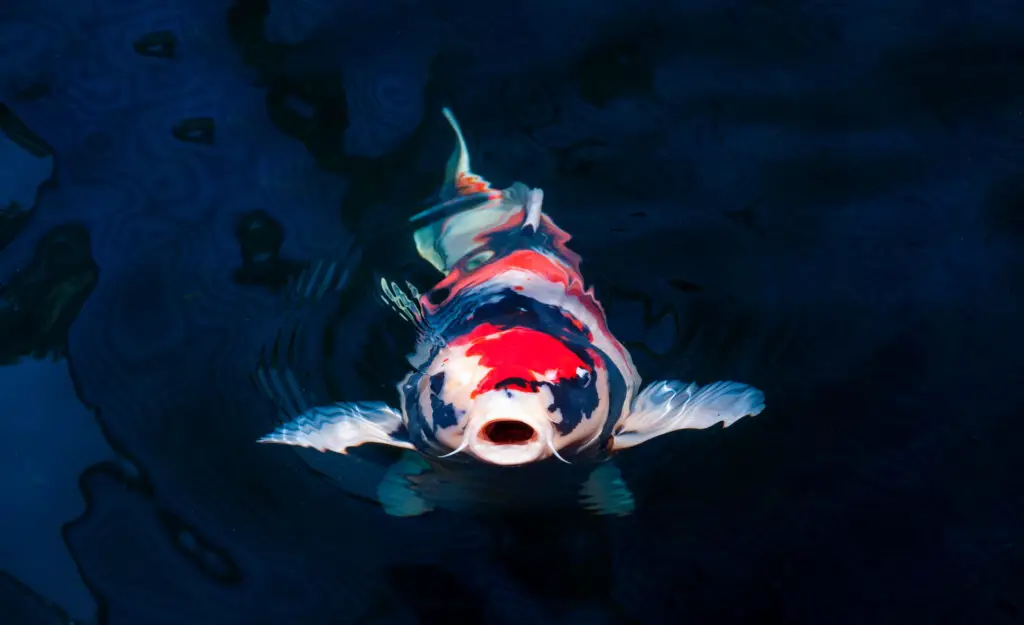
Koi fish are one of the most popular fish kept in outdoor ponds. Many koi hobbyists prefer to have a pond of just male koi. Males in the pond will be active, slender-shaped fish with beautiful vibrant colors. Here is everything you need to know about the male koi.
The male koi has a slender body, pointed and solid-colored pectoral fins, vivid coloring, and can grow to 24” long. Males mature at 2-3 years and fertilize the female’s eggs to produce baby fry. During mating, a male will chase the female and bump against her so she can release her eggs.
Healthy male koi fish living in a pond can have a lifespan of 30 to 50 years. This is dependent on knowing how to raise and care for them. Read on to discover more specifics about the male koi.
Pro Tip: If you’re tired of wasting money and making costly mistakes on the koi-keeping hobby or are thinking about buying koi fish but don’t know where to start, I strongly suggest you check out this ebook. I recently read this ebook, and it contains SO much useful information, such as:
- 3 proven steps to identify koi fish diseases
- WARNING: 3 things you should NEVER do when it comes to caring for koi
- When to seek professional help when it comes to looking after your koi
How To Identify Male Koi?
Both male and female koi fish grow roughly the same size and have colorful scales. But there are some clues as to whether you have a male koi in your pond.
It is also easier to tell if the fish is male when the koi has reached maturity, usually around 3 years old.
The male would be at least 10 inches in length at this age.
Here are some gender-defining clues to identify a male koi.
The Body Of The Male Koi
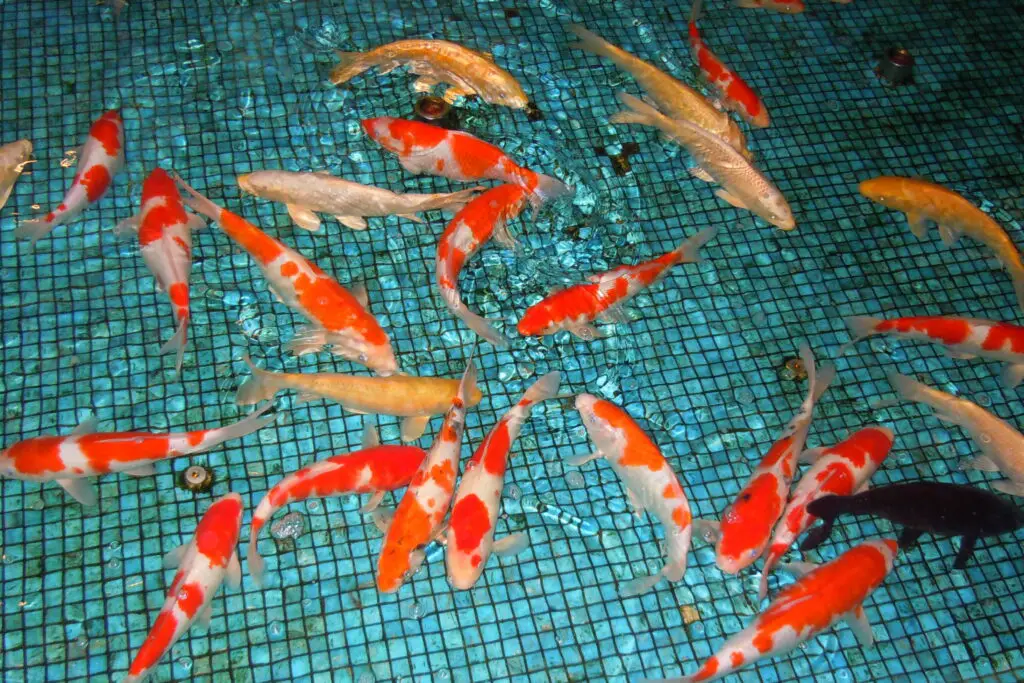
When looking at the koi from above, you will notice that some are more streamlined and slenderer than others.
The slender-bodied koi are males.
Males will stay slender as this is part of their natural body structure.
They can reach a length of between 24 to 36 inches. The base of the tail of a male koi is also much thinner than female koi.
The Fin Shape Of The Male Koi
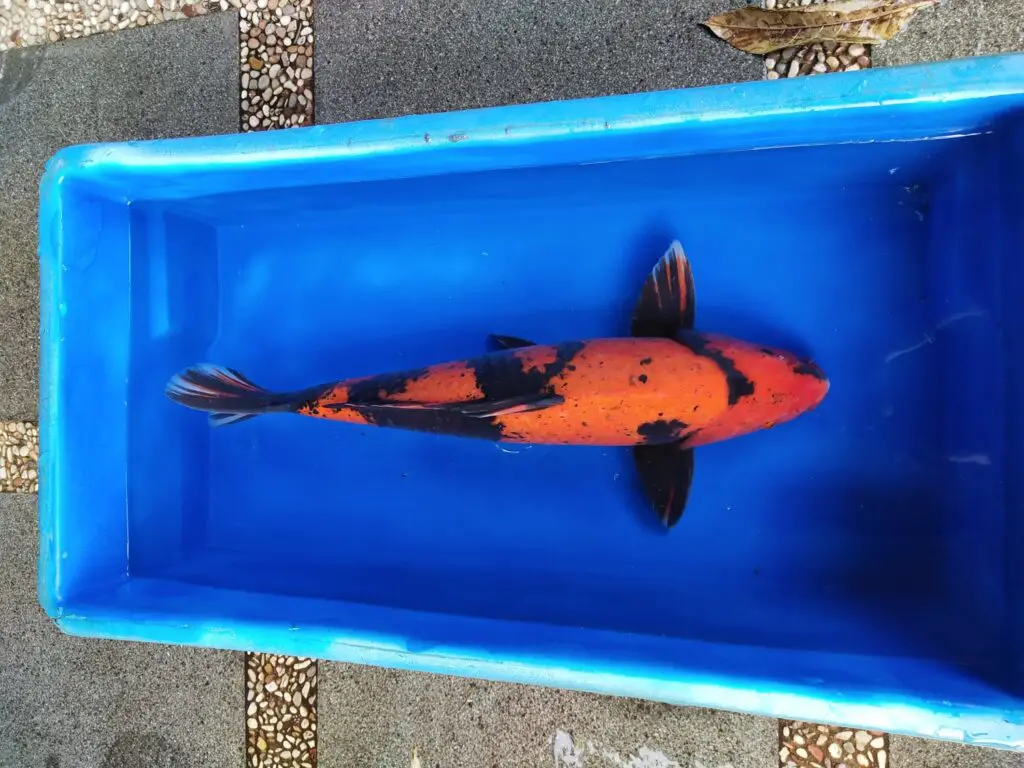
A male koi’s pectoral fins, located behind the gills, are more pointed and solid in color than the females.
A Male Koi’s Ventral Region (Vent)
The vent of the koi fish is located just before the anal fin. The male koi will have a slit with a tight vent that does not bulge away from its body as the females do. It often looks like it is receded and is rounder.
However, this difference can only be detected in mature males. The vents of young male and female fish most often will appear similar.
A Male’s Tubercles On His Head And Fins
When the female koi is ready for breeding, the male koi will display little white growths known as tubercles on their heads and pectoral fins.
You will notice this occurrence more easily when the water temperature rises above 64°F. This is a natural occurrence and will disappear after the breeding season.
Color Development In Male Koi
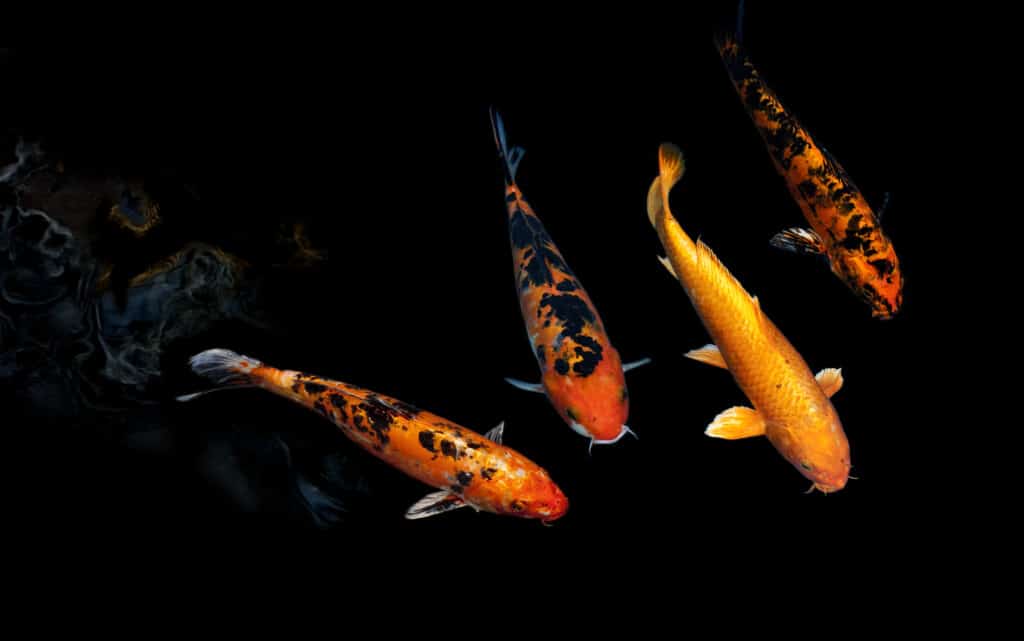
The male koi will develop color much more quickly than the female. Their colors are typically white or silver with colorful spots and markings. The markings are red, gold, orange, black, and sometimes a deep blue.
But this is not the most accurate factor in determining if the fish is male or female. Due to changes associated with breeding, young females alter their pattern and color during the first few years of life.
The color is determined by the pigment-containing cells called chromatophores. This pigmentation lies above or below the scales or deep in the skin. The color is usually less intense when the chromatophores lie closer to the surface. Your male koi is born with all the pigmentation it will have, but as the fish grows, this pigmentation will spread out.
As the Koi ages, his color will change, and the patterns will, too, as it stretches over the growing body. You can feed your male supplements to boost cellular pigmentation and enhance the color. Be mindful of providing as instructed on the package, and do not overfeed.
Other factors that can influence the color of fish are their diet, environmental conditions, and age of the fish. However, many young koi are chosen for their beautiful vivid colors, and many turn out to be male.
Typical Male Koi Behavior
When it is not breeding season, the male and female koi will behave very similarly. But once the female is about to lay her eggs, the male goes into full passion mode.
Males can be seen chasing the female, often very enthusiastically. They will nudge and push up against the female to encourage her to spill her eggs.
When Does A Male Koi Become Sexually Mature?
The male koi will become sexually mature when it has reached a length of about 12 inches. Generally, it will take the male about 2 to 3 years to get this length.
How Do Male Koi Fish Fertilize Eggs
The male will follow the female during the spawning ritual until she lays her eggs. As soon as the eggs are spilled, the male will release sperm onto hundreds of thousands of eggs. This entire process happens very quickly.
At this stage, you will notice the water in the pond where the female laid her eggs looks very cloudy and foamy.
This is caused by the protein in the male koi fish’s sperm. A male koi’s sperm also produces a strong, pungent odor that smells fishy. This occurrence usually lasts a few days; all should return to normal afterward.
Can Koi Fish Change Gender?
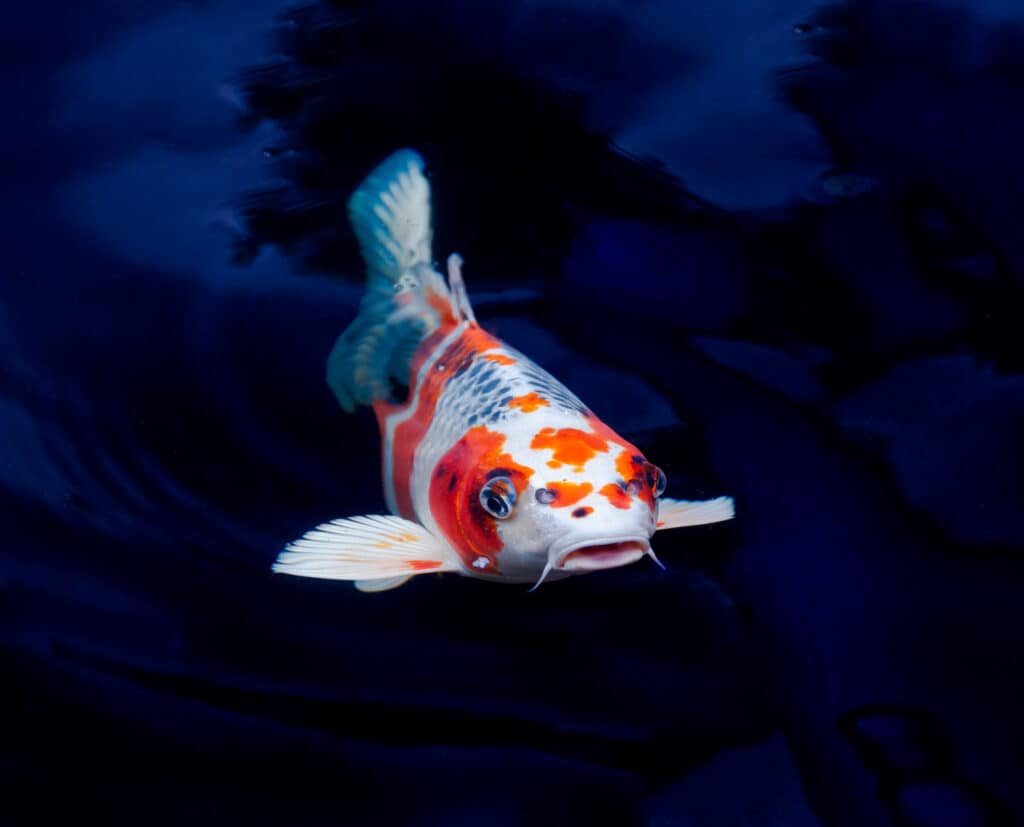
When the koi fry is still small, they look and act the same, and it is difficult to tell which will be male or female.
As the koi fish matures, hormones are released through the blood. These chemical signals move through the blood to the rest of the body. During this process, the chemicals will stimulate the reproductive organs, which will begin to change.
In female koi fish, the reproductive organs will produce fish eggs. Other hormones also cause the fish to behave, look, and function like females.
In male koi fish, the reproductive organs will produce sperm cells. This fish will begin to act, function, and appear as a male.
There is no formal documentation about koi fish changing gender. So it is not known for sure if some koi actually change their gender.
However, in some fish, like parrotfish or anemonefish, only parts of their reproductive organs develop first.
The fish lives for a short while as a female and then develops reproductive organs to stay female, or it will change and develop into a male.
Do Male Koi Fight?
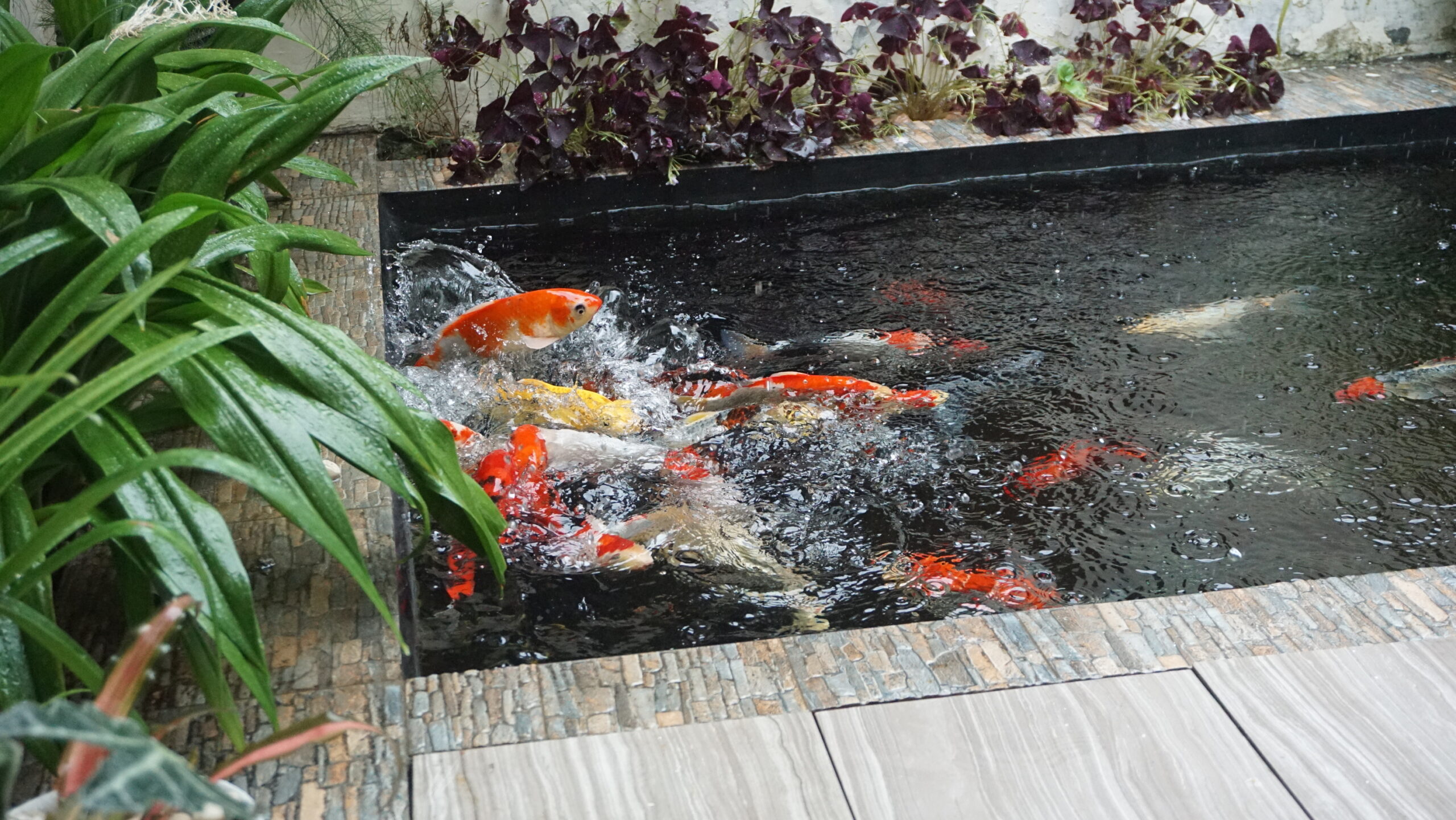
Koi fish are usually gentle by nature, but they can sometimes be aggressive. Sometimes a certain amount of bullying takes place within the pond.
However, there are certain situations and factors when the male will show some form of hostile behavior. Below are some reasons that could be causing the ruckus in your pond.
General Aggressive Temperament
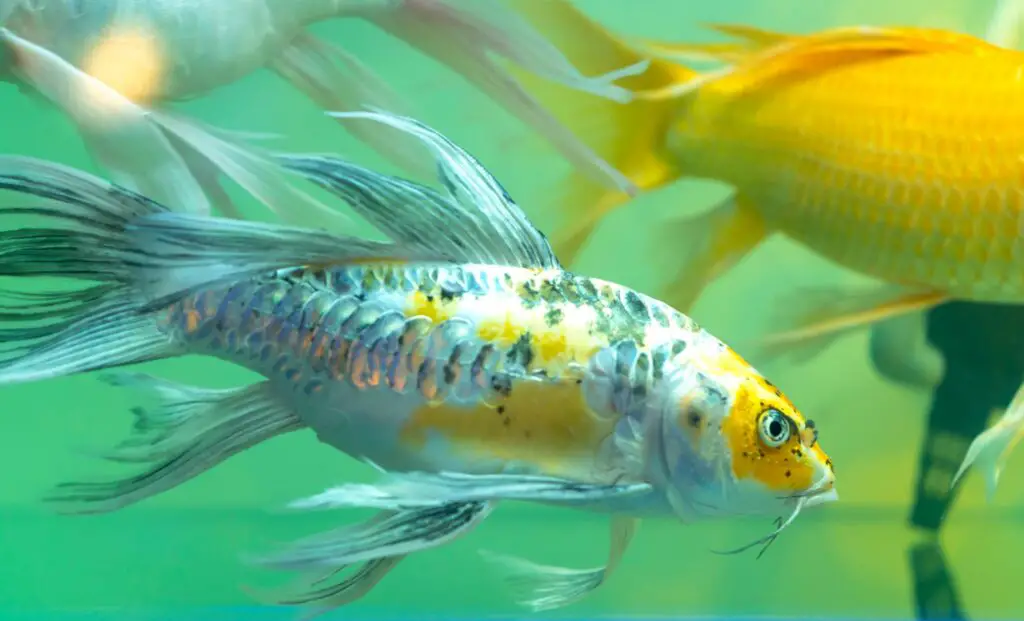
If there is no specific reason for a koi to show aggression, you might have an aggressive koi. Typical of the aggressor, the male will fight for food and be the first fish at the surface when food is available. This often happens when the male koi is a newcomer to the pond.
The best way to deal with an aggressive male is to keep him separate from other males for a short while. Place him in a separate area within the pond so that he and the other koi can become accustomed. Often, a pecking order ritual takes place, so slowly introducing the new male to the pond is a good idea.
Fighting During Breeding And Spawning
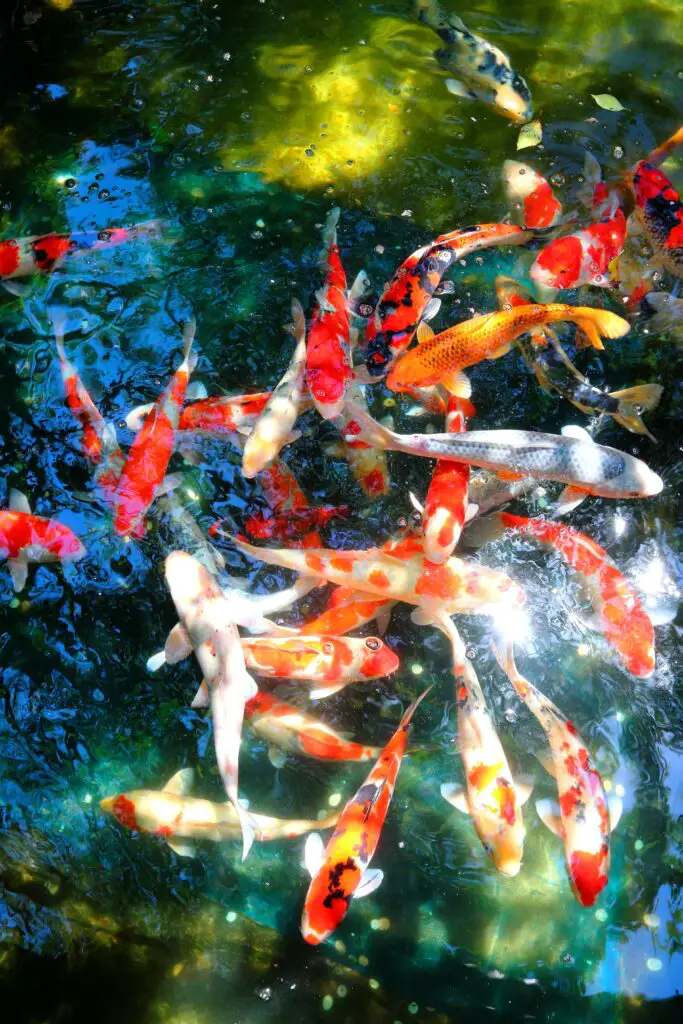
During the breeding season, all male koi fish are more aggressive than usual. Your male koi will become hostile toward the other male fish. Males koi fish will be competing to be the ones to fertilize the female’s eggs.
The male koi will nip and shove each other, pushing the female koi against things in the pond. This is all part of the spawning process and must not be mistaken for aggressive behavior.
Unfortunately, it does sometimes cause injury to male and female koi during this time.
If some male koi seem too aggressive and you are afraid that the female koi will get hurt, you can separate the fish. Keep only two male koi with a female koi in an area. This will be less stressful for the fish, and one of the male koi will fertilize the eggs.
Too Little Space In The Pond
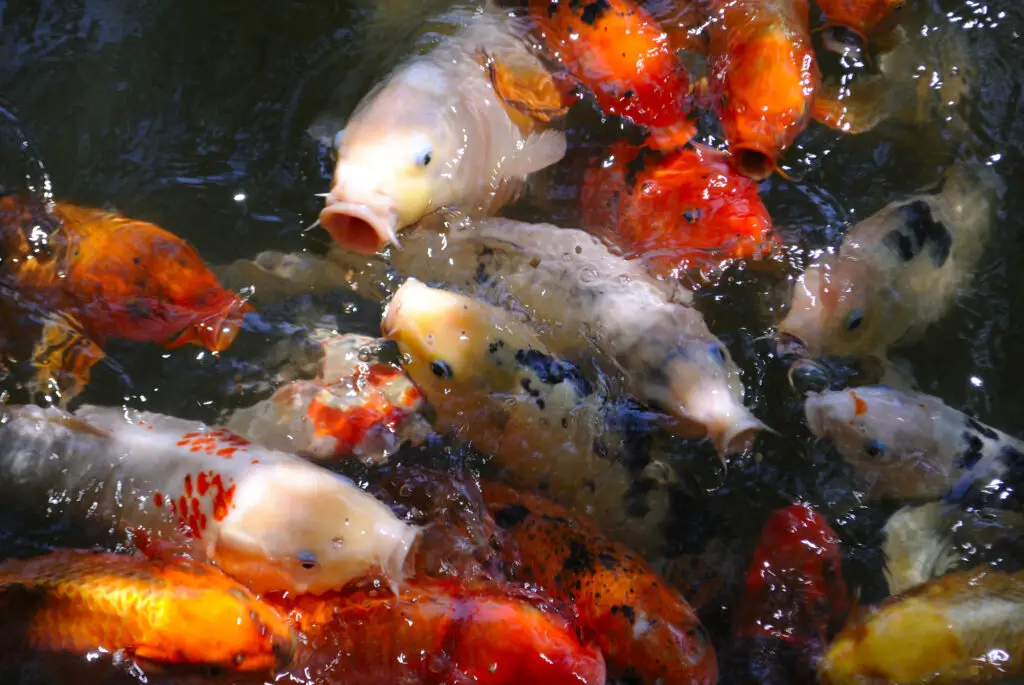
Violent behavior often occurs when koi must compete for food, space, and shelter in a pond. This happens when there is overstocking. The more room you provide for your male koi, the less aggressive and happier it will be.
Too little space is also the likelihood of nutrient overload, leading to diseases and illness in your pond. This is the time to give away some fish to have a healthier pond. It is best to stick to a rule of 1 koi fish to 250 gallons of water.
Too Little Quality Food
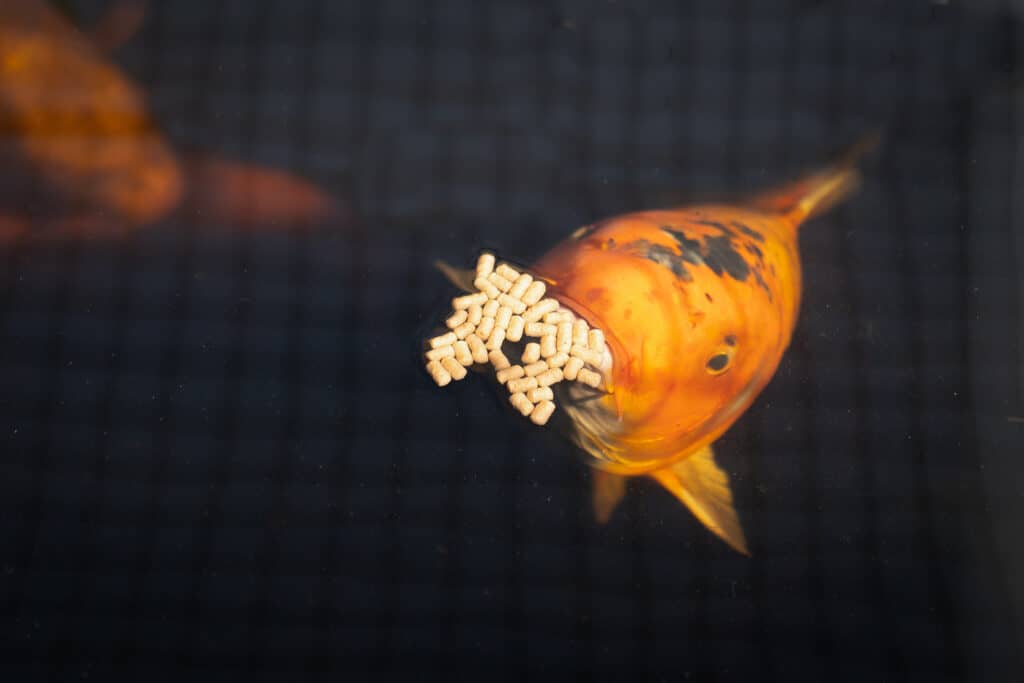
Not having enough food can cause male fish to become aggressive when fighting for their nutritional needs. Also, feed your males high-quality food to keep them healthy.
Injury Or Illness In The Male Koi
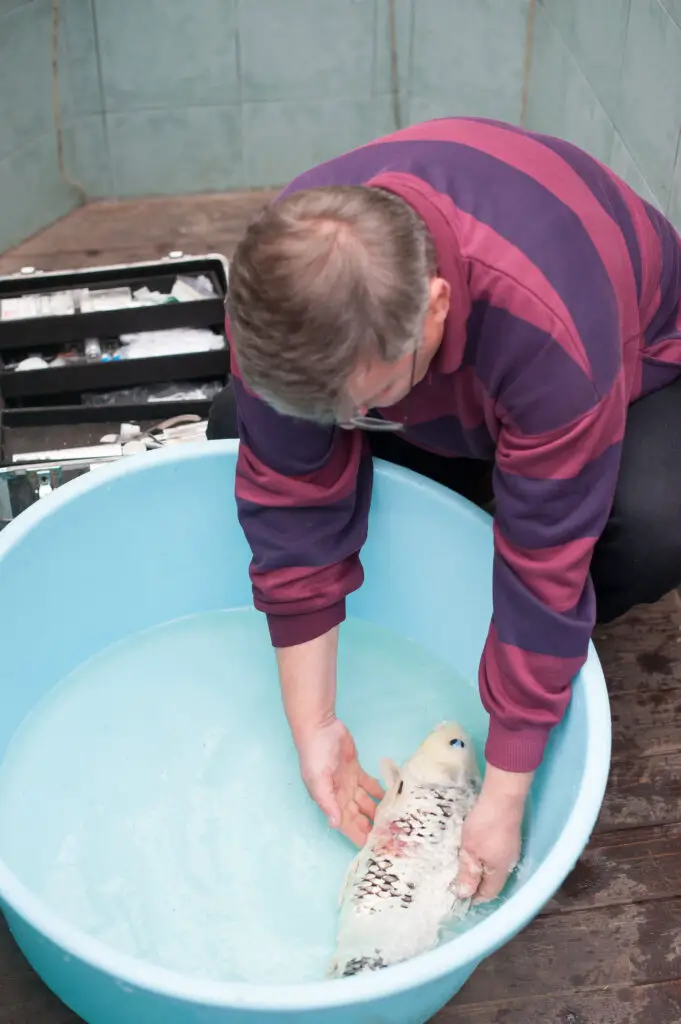
If your male koi is injured or sick, there is a chance that he will be bullied by the other healthier fish in the pond.
The sick or hurt male koi often become restless, irritable, sluggish, and hostile towards the other fish. Should this be the problem, separate the male being bullied so you can examine it and treat it accordingly.
Stress Factors In Male Koi
When your male koi and other fish in the pond are stressed, they will lash out and be aggressive toward each other. Stress can be caused by overcrowding, lack of food, poor water quality, water temperature not being compatible, and when males are competing for mates.
Predators such as cats, herons, or foxes that stalk the pond will also cause your male to become stressed. Make sure that these factors are not causing stress within your koi pond.
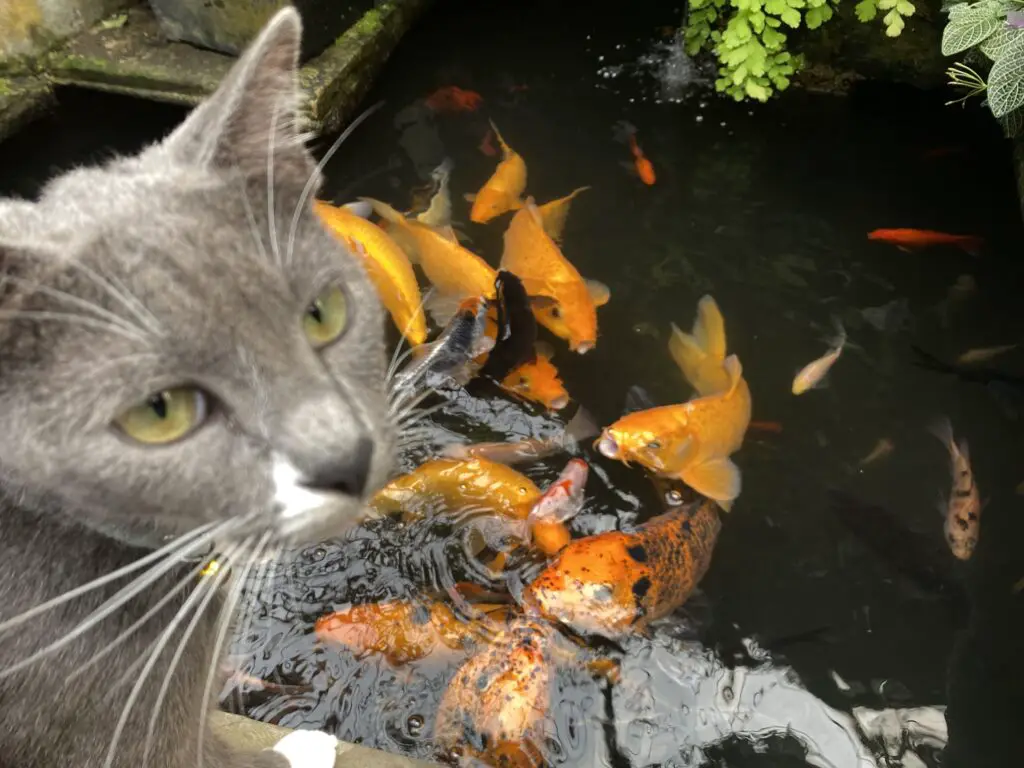
How To Care For A Male Koi Fish
Ensuring your male koi stays healthy and content in its new surroundings is essential. You will be rewarded with a lovely fish with vivid coloring and beautiful markings.
- Ensure the pond is at least 3 feet deep and holds at least 1,000 gallons of water.
- Smooth or cover the bottom surface of the pond with fine gravel so that your male koi does not injure his belly. Your male will spend much time at this depth in winter because the water is warmer.
Ensure the water temperature stays between 59 to 77°F.
- Have a good filter system in place to keep the water clean. Keep the pond well-oxygenated; you can add a waterfall or fountain. Ensure that the ammonia level of the pond is kept as close to zero as possible.
- Put a drain at the bottom of the pond for easy cleaning and water changes.
- Ensure your male koi will not get sunburned. Add floating plants, or build a pergola over part of the pond for shade from the harsh sun.
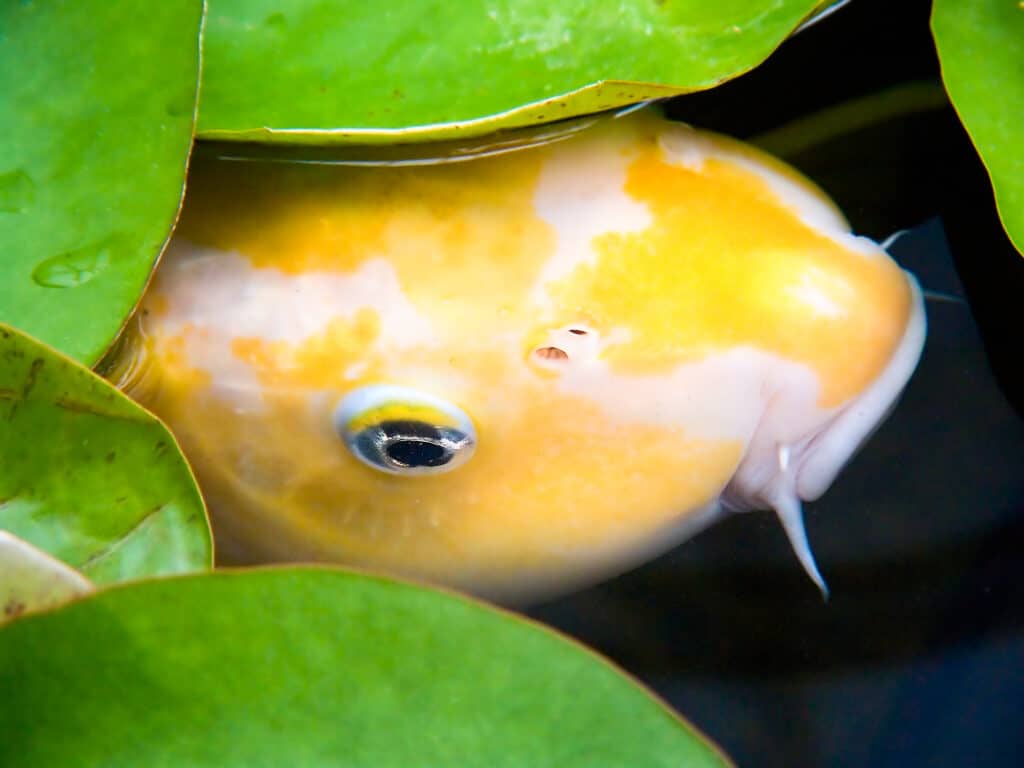
What To Feed A Male Koi
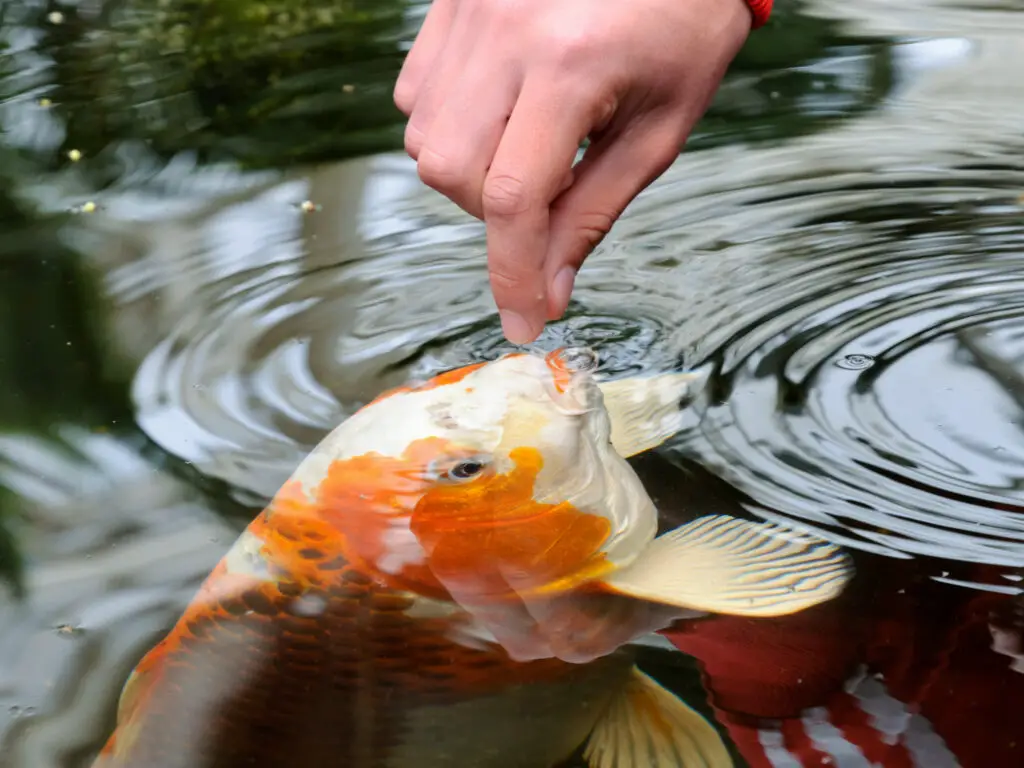
Koi are omnivores and will eat meat and vegetable components in their diet. Pond-kept male koi should be given quality floating koi pellets and sticks four times daily.
These pellets should contain probiotics that break down carbohydrates, proteins, and fats.
Supplement this food with treats such as freeze-dried krill and shrimp. You can also feed your male live food, such as bloodworms and river shrimp.
Don’t overfeed your males; they should be able to eat the portions within 5 to 10 minutes. If your male takes longer than this to eat, give less food. It is important to note that your koi might eat less in colder climates.
Refer to the packaging instructions for feeding to ensure that your male is getting enough nutritional value from the food. During winter, your male living in an outdoor pond will eat less.
Is My Male Koi Fish Sick?
Your male koi could become sick if the pond has poor water quality, the pond is overcrowded, or other environmental factors.
Koi fish affected by parasites or bacterial infection will show some symptoms that they are ill.
You will notice your male will not be eating, or it will lie listlessly near the water’s surface. The fish might also be gasping for air and on its own.
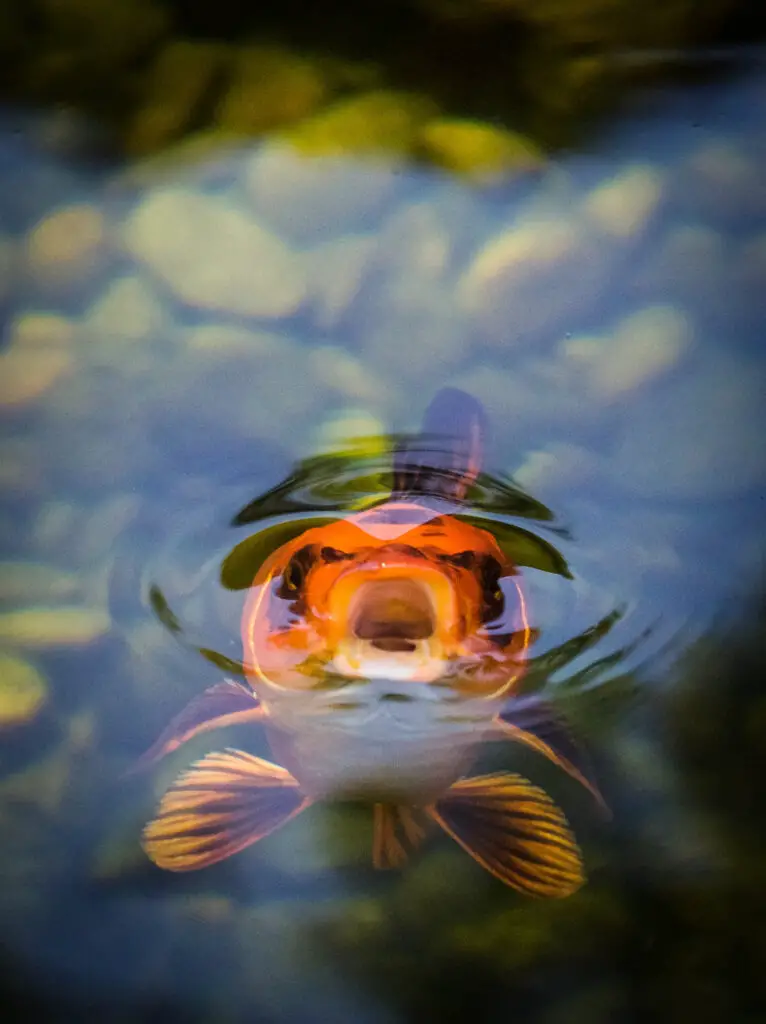
The fish might also have signs of ulcers, ragged fins, and fluffy cotton-like tufts on the body. Most microbial diseases can be remedied with salt, antibiotics, and cobalt solutions.
Facts About The Male Koi Fish

Below are some interesting facts about the male koi:
- Your male koi will enjoy rice, shrimp, crayfish, and worms as a treat.
- Once it has reached maturity, a male can fertilize eggs for about 6 to 7 years.
- When the water becomes colder, your male koi will enter a torpor-like state in winter. His metabolism, immune system, and bodily function will slow down. The fish will eat less and huddle together with the other koi in the pond.
- Your male koi has a row of teeth at the back of the throat called pharyngeal teeth. The fish will use these teeth to grind food like insects and shells found at the bottom of the pond.
- Males are easier fish to care for as they don’t have to carry or spill eggs as the females do.
Conclusion
Male koi fish can be identified by the shape of their bodies, fins, and ventral regions. The male koi will develop beautiful bright colors sooner than the female. Males can become aggressive when they compete during mating season, when every male wants to fertilize the female’s eggs. Only when the male fertilizes the eggs will they grow into baby fry.
Males in the pond will fight if the pond is too small, if there is too little food, or if a male becomes ill or stressed. Caring for your male koi will keep the fish healthy, and you will have a beautiful, contented, and happy fish swimming in your pond.
References
https://animals.mom.com/koi-fish-male-female-8104.html\
https://earthsky.org/earth/how-can-some-fish-change-from-female-to-male/


